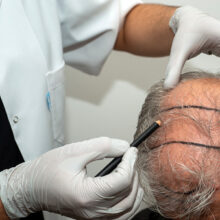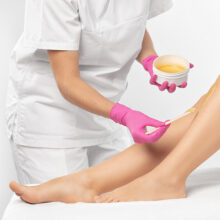Melasma & More: What Expecting Mothers Should Know About Skin Care
- Published: Thursday, May 21st 2015
- in Beauty
 I began developing Tatcha while pregnant with my daughter, Alea—our Petal Fresh Original Aburatorigami Beauty Papers became available in stores the same day she was born, so I often consider them sisters. Learning the scientific side of skin care while discovering the drastic changes the body undergoes during pregnancy was an eye-opening time for me.
I began developing Tatcha while pregnant with my daughter, Alea—our Petal Fresh Original Aburatorigami Beauty Papers became available in stores the same day she was born, so I often consider them sisters. Learning the scientific side of skin care while discovering the drastic changes the body undergoes during pregnancy was an eye-opening time for me.
I had the opportunity to work with GoodGuide, a venture started by a team of scientists whose mission is to provide sustainability ratings on consumer products. I learned there that the United States has an “innocent until proven guilty” stance on skin care, meaning that ingredients are permitted unless they are proven to cause harm.
Europe and Asia have an opposite approach—any ingredient needs to be on a proven “known to be safe” list in order to be used in skin care. Because I was pregnant while creating these formulations, I was dedicated to creating a pregnancy-safe collection, and one that would address the varying stages of skin during pregnancy.
Melasma
During pregnancy, hormonal changes can cause an excess production of melanin. The resulting dark spots are often referred to as melasma, hyperpigmentation or a “mask of pregnancy.” In some cases, the melasma will naturally reverse once the hormones balance out; in others, the spots begin to lighten after pregnancy.
- Avoid: If using brighteners, physicians generally recommend that pregnant or breast-feeding women avoid retinoids. Topical retinoids have an unknown effect on the skin, and oral retinoids such as isotretinoin are known to cause birth defects. Topical hydroquinone, another popular lightening active, is known to absorb into the body and generally should be avoided for lack of safety data.
- Instead: Gentle daily exfoliation helps to slough away the top layers of dull or darkened skin, lightening existing age spots, while a brightener with natural active ingredients like licorice root can help prevent future spots.
Change in Skin Type
Hormonal shifts can cause extremely dry or oily skin, along with breakouts.
- Avoid: Salicylic acid is commonly found in exfoliants, masks, peels, and acne treatments. When taken orally at concentrations over 2 percent, it can cause pregnancy complications; when used in body or facial peels, it can absorb into the bloodstream.
- Instead: Exfoliating daily helps to resurface skin and promote cell turnover, controlling excess oil and sebum build-up and minimizing breakouts. Look for a non-abrasive, gentle exfoliant that can be used every day. A hydrating mask helps dehydrated skin by boosting the moisture reservoir without using ingredients that may cause complications.
Tired Eyes
The eyes are the first to show the signs of a few nights with no sleep. You’ll need an efficacious eye cream to combat dark circles, puffiness, and dull, tired skin.
- Avoid: Many eye creams contain parabens, preservatives commonly found in cosmetics. These can accumulate in the body, potentially affecting a baby’s endocrine system.
- Instead: Look for an eye cream free of parabens and featuring natural actives to promote microcirculation, spirit away fine lines, and lighten dark circles around the eyes.
It is important to note that everyone’s skin care needs are unique, particularly during pregnancy. To determine whether a product is right for you, it’s always wise to review the ingredient list with your doctor to address any questions or concerns.



